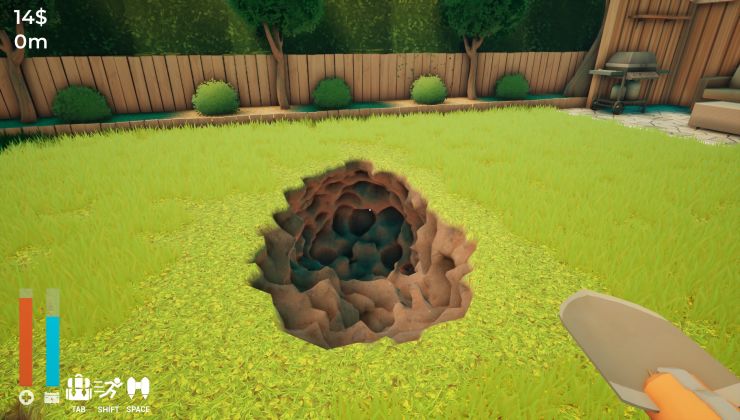On Linux with AMD GPUs you can decide between the RADV and AMDVLK drivers for Vulkan API support, and it appears AMD want to make things a little easier for you.
It can get a little confusing so here's the real basics: AMDVLK is the "official" external Vulkan driver developed by AMD, whereas RADV is part of Mesa and comes with most distributions by default. Sometimes certain games work better on one, sometimes on the other. Additionally, AMD only directly support Ubuntu and Red Hat, whereas Mesa with RADV focuses on everything they can.
With the latest AMDVLK 2021.Q1.1 release, AMD has made switching between the two a little easier. With this driver installed, you only need to set an environment variable to tell whatever game or application you're using what driver to use with "AMD_VULKAN_ICD" set to either "AMDVLK" or "RADV". The default is AMDVLK of course, if none is set.
Here's the highlights of this new driver release:
New feature and improvement
- Add AMD switchable graphics layer to switch AMD Vulkan driver between amdvlk and RADV
- Update Khronos Vulkan Headers to 1.2.164
- Navi21 performance tuning for game X-Plane, Madmax, Talos Principle, Rise of Tomb Raider, F12017
Issue fix
- RPCS3 Corruption observed on Game window on Navi10
See more on GitHub.
Well that's not quite the whole truth. The module exists and still reports temperatures, but the reason it doesn't report voltage and current any more is not just about the documentation. Here's the relevant commit message:AMD and Valve are two of most helpful companies and must be supported from us.
meehhh they kicked the AMD sensor thingy (k10temp) out of kernel 5.10 because a lack of documentation. now some values are useless and i have to stick with kernel 5.9
Voltages and current are reported by Zen CPUs. However, the means
to do so is undocumented, changes from CPU to CPU, and the raw data
is not calibrated. Calibration information is available, but again
not documented. This results in less than perfect user experience,
up to concerns that loading the driver might possibly damage
the hardware (by reporting out-of range voltages). Effectively
support for reporting voltages and current is not maintainable.
Drop it.
If there's code in the kernel that might risk damaging your hardware (or simply provides unreliable data), I'd say removing it is a good decision.
Well that's not quite the whole truth. The module exists and still reports temperatures, but the reason it doesn't report voltage and current any more is not just about the documentation. Here's the relevant commit message:AMD and Valve are two of most helpful companies and must be supported from us.
meehhh they kicked the AMD sensor thingy (k10temp) out of kernel 5.10 because a lack of documentation. now some values are useless and i have to stick with kernel 5.9
Voltages and current are reported by Zen CPUs. However, the means
to do so is undocumented, changes from CPU to CPU, and the raw data
is not calibrated. Calibration information is available, but again
not documented. This results in less than perfect user experience,
up to concerns that loading the driver might possibly damage
the hardware (by reporting out-of range voltages). Effectively
support for reporting voltages and current is not maintainable.
Drop it.
If there's code in the kernel that might risk damaging your hardware (or simply provides unreliable data), I'd say removing it is a good decision.
i dont think linus wanted to kick it out so my point still stands. its AMDs fault
Last edited by mylka on 9 Jan 2021 at 3:14 pm UTC
Well that's not quite the whole truth. The module exists and still reports temperatures, but the reason it doesn't report voltage and current any more is not just about the documentation. Here's the relevant commit message:AMD and Valve are two of most helpful companies and must be supported from us.
meehhh they kicked the AMD sensor thingy (k10temp) out of kernel 5.10 because a lack of documentation. now some values are useless and i have to stick with kernel 5.9
Voltages and current are reported by Zen CPUs. However, the means
to do so is undocumented, changes from CPU to CPU, and the raw data
is not calibrated. Calibration information is available, but again
not documented. This results in less than perfect user experience,
up to concerns that loading the driver might possibly damage
the hardware (by reporting out-of range voltages). Effectively
support for reporting voltages and current is not maintainable.
Drop it.
If there's code in the kernel that might risk damaging your hardware (or simply provides unreliable data), I'd say removing it is a good decision.
i dont think linus wanted to kick it out so my point still stands. its AMDs fault
Linux wants or not wants anything, This was down to one mans decision, Linus !
Is it AMD's fault? Partly I agree, but not solely.
AMD_VULKAN_ICD=AMDVLK and it did nothing. The only way to load AMDVLK is by using the old method:VK_ICD_FILENAMES=/etc/vulkan/icd.d/amd_icd32.json:/etc/vulkan/icd.d/amd_icd64.json







 How to set, change and reset your SteamOS / Steam Deck desktop sudo password
How to set, change and reset your SteamOS / Steam Deck desktop sudo password How to set up Decky Loader on Steam Deck / SteamOS for easy plugins
How to set up Decky Loader on Steam Deck / SteamOS for easy plugins
See more from me